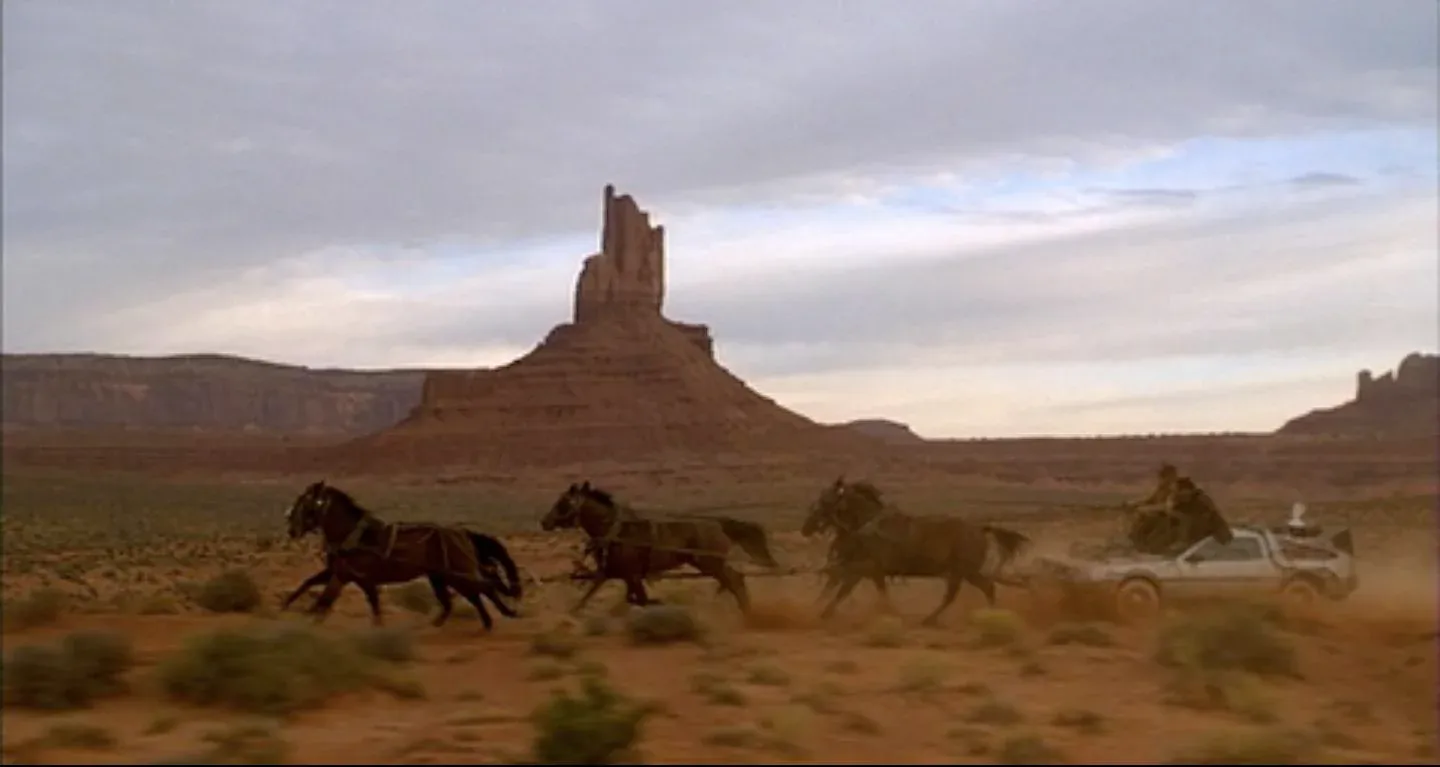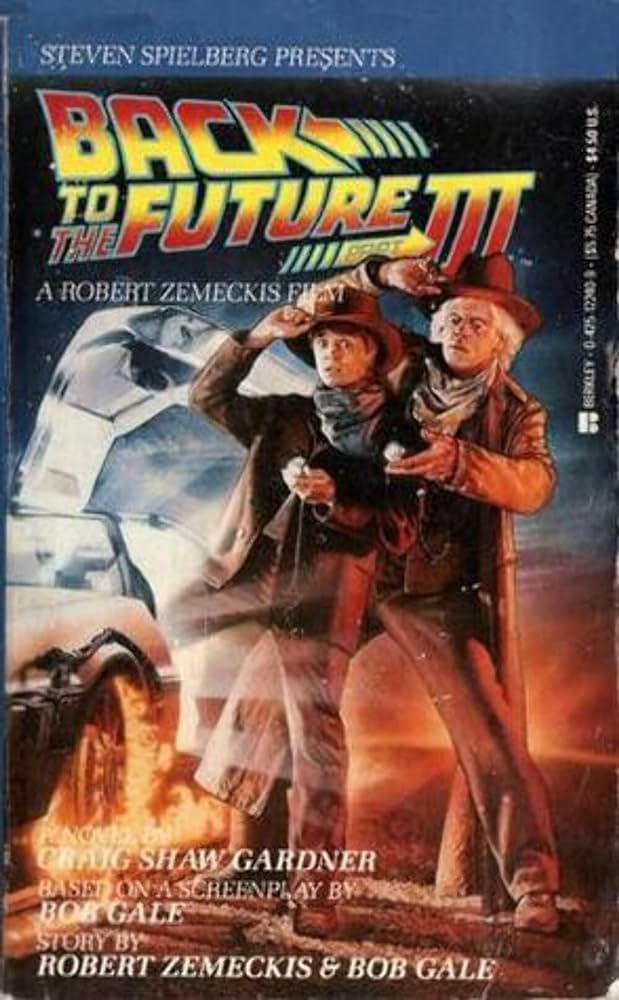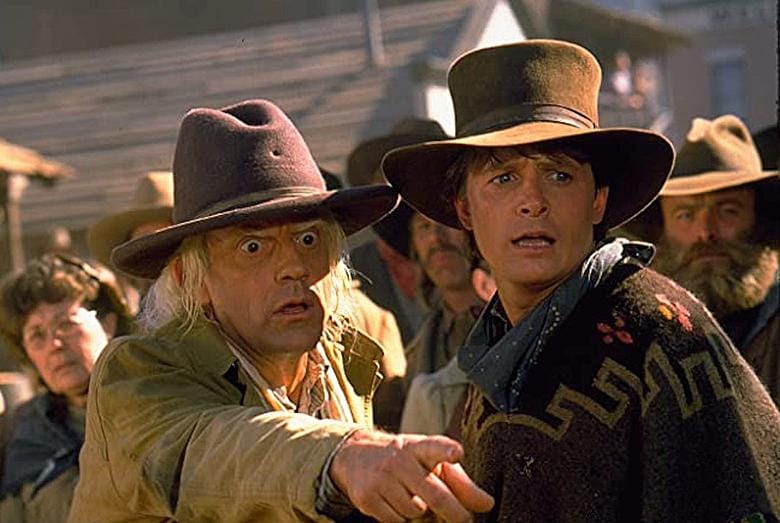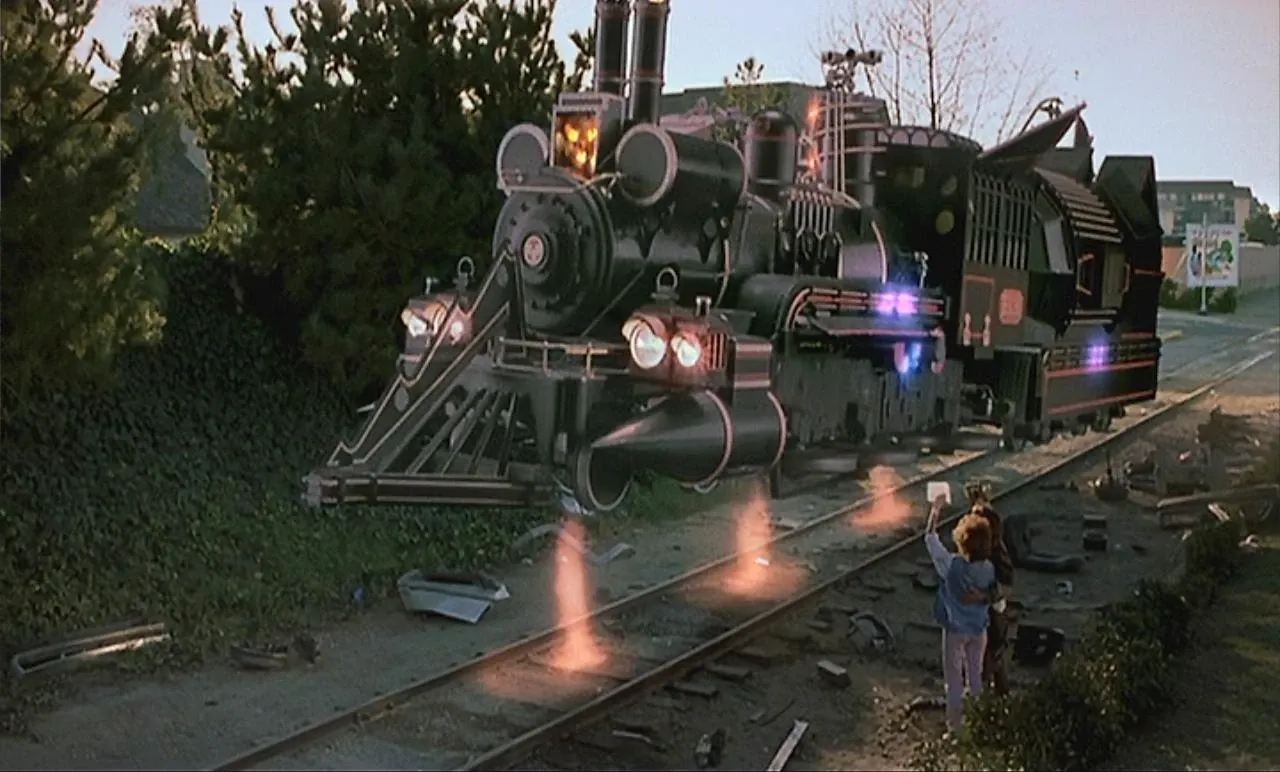Hollywood & Spine Archive: Back to Back, Vol. 3
An overview of the novelization to BACK TO THE FUTURE PART III, originally published in June 2020.

Because I am typically not someone who plays up novelizations for dramatic effect, I was kind of worried, re-reading this, that I glossed over the casually insane idea that the Doc Brown of 1985 would calmly react to suddenly implanted memories of what his 1955 counterpart did to reunite Marty with himself in 1885. It kind of invites questions that the series is good at not answering and making you forget about, like how Marty's parents don't see any resemblance between the guy who got them to date in high school and their youngest son. Such is the thrill of novelizations, to me - but in a normal way. (originally published 6/14/2020)

Back to the Future Part III by Craig Shaw Gardner (based on a screenplay by Bob Gale; story by Robert Zemeckis and Bob Gale) (Berkeley, 1989)
The pitch: The last act in the hit trilogy puts Marty and Doc in a most unusual place: the Old West, 100 years before the date the story started.
The author: With Parts II and III shot back-to-back, Craig Shaw Gardner was hired to write both novelizations. The notable sci-fi/fantasy writer also turned out a bestselling adaptation of Batman in 1989.
The lowdown: If you had a time machine like the one in Back to the Future, there would be no limits as to where (or when) you could go. If you created a time machine story like Bob Gale and Robert Zemeckis did with the most famous time travel trilogy ever made, you similarly had few limits. The duo threw everything at the wall for a proposed BTTF sequel: the future, an alternate present affected by tampering with a revisited past, and The Old West. It was soon clear this was too much for one film, and the duo went to Universal Pictures with good and bad news: Back to the Future Part II would miss the summer movie season in 1989, but would be ready by year's end...with Part III prepped simultaneously for the following summer.
Part III shares a similar structure to the original film, sticking mostly to one point in the space-time continuum. It's far from a retread, though, thanks in part not just to the setting, but the introduction of a fresh new character (Mary Steenburgen as Doc Brown's love interest Clara) and how it affects the journey of Marty McFly, as he finds himself bewildered by the scientific Doc's emotional turns and is forced to consider how his own quick tempered foibles could guarantee a bad future (or worse, none at all). Add in the series' signature genre-mixing and dazzling set pieces like the climactic train sequence, and it's easy to see why Part III's star has risen over time, especially on the recent occasion of its 30th anniversary.

Given his assignment to adapt Part II and Part III, Craig Shaw Gardner could have finished out the series by any means necessary. Instead, his prose work is so fresh and fun that you almost wish he'd been the one to adapt the series from the start (with respect to the late George Gipe's unusual BTTF adaptation). Readers might not have noticed it across the six months the books were released, but a back-to-back read shows Gardner having fun with his workload, starting both books at the same place: the moment when Doc helps Marty make his first trip back to the future during a lightning storm in 1955. A close read shows the passages in each book are almost identically structured - a smart time-saving move, for sure, but appreciated given the film's snappily-put points about personal history repeating itself.
As in his Part II book, Gardner takes cues from what made BTTF such a rousing success in the first place: the well-established sense of character for Marty, Doc and the other major players. For lovers of trivia or detail-oriented geeks, the Part III novelization offers much to feast on. Newcomer Clara Clayton enjoys a much richer backstory, established as a worldly New Jerseyan teacher whose love of science and H.G. Wells made her a misfit and spurred her to escape for new opportunities in Hill Valley, where she fell in love with a real-life time traveler. Marty's semi-fitness for a journey to the Old West is established by his memory of riding horses as a pre-teen in summer camp. The old-timers in the saloon, all played by noted Western character actors, all get names - Levi (Dub Taylor), Zeke (Harry Carey, Jr.) and Jeb (Pat Buttram) - as do Doc's horses, Archimedes, Galileo and Newton (a sly nod to Doc naming his dogs Copernicus and Einstein).
Now, last time we alluded to Part III being a slightly more "out there" reading experience. Indeed, there's a pretty nutty point about time travel and human memory made through Gardner's third-person narration, when Marty finally unites with Doc in 1885:
"Marty," he announced sharply, "I gave you explicit instructions not to come back here, but to go directly back to 1985!"
Marty gave up rubbing the rope burns on his neck to smile at the inventor. "I know, Doc."
That was it? He knew? Doc could think of all sorts of reasons why Marty shouldn't be here. But, then again, now that he thought of it, hadn't he helped Marty get here, back in 1955? Of course he had - he had clear memories of sending the teenager and the DeLorean off not once, but twice. That was pretty important, wasn't it? Why hadn't he remembered that before?
Oh, of course. He hadn't remembered it, because, until Marty had shown up in 1885, he hadn't helped Marty get back to 1885. In other words, Marty, by coming here, had not only changed the past - that is, 1885 - but he had changed Doc's past in 1955 as well. It was another one of those time travel paradoxes, probably the first of many, now that both he and Marty were back in the old west.
It continues: Doc muses how, had he shot Mad Dog Tannen for threatening Marty's life, it could have prevented Biff's birth in the future, negating nearly the entirety of the Back to the Future series up to that point. He then "decided not to think about it for the moment," which is probably for the best for readers, too. (He returns to it briefly when he suddenly remembers that yes, in his own past/the future of 1955, he had picked out Marty's ridiculous cowboy outfit.)
This isn't touched on in the film at all, but it's pretty wild to think about: the spontaneous implementation of past (but also future) memories upon being informed about them in the present. Mind-bending! (It's unclear if this is the "plot hole you could drive a truck through" Gardner said he brought up in a Comics Alliance interview in 2014, which Gale apparently fixed in the final cut.)

The cutting room floor: One of the only two unused scenes of any major importance in the Part III novelization is a heinous crime by the villainous Buford "Mad Dog" Tannen: the murder of Marshal Strickland (ancestor of Hill Valley High's bald-headed disciplinarian) before his final confrontation with Marty in town. The other is a weird offhand segment before Marty and Doc leave Hill Valley to catch their train. A young boy marvels at Marty's bait and switch from A Fistful of Dollars that helped him defeat Tannen, but asks what Marty means when he says he learned how to do it "in a movie." The boy is shooed away for his inquisitiveness, but not before we catch his name: D.W. Griffith, the extremely racist pioneer of early cinema.
As many well-meaning white audiences have (hopefully) sought to address implicit privileges as seen in popular entertainment within the last month, this one unfortunately sticks out as badly as Marty stealing rock and roll away from the genre's Black creators. I don't know Griffith was a known quantity even in 1990 to anyone but the most strident film nerds, and I'm glad the film doesn't include it at all.
The last word: There's some real stuff to chew on in this adaptation - some surely more fun than others - and just like the film it's based on, this verbal version of Back to the Future Part III sticks the landing for the entire trilogy.
